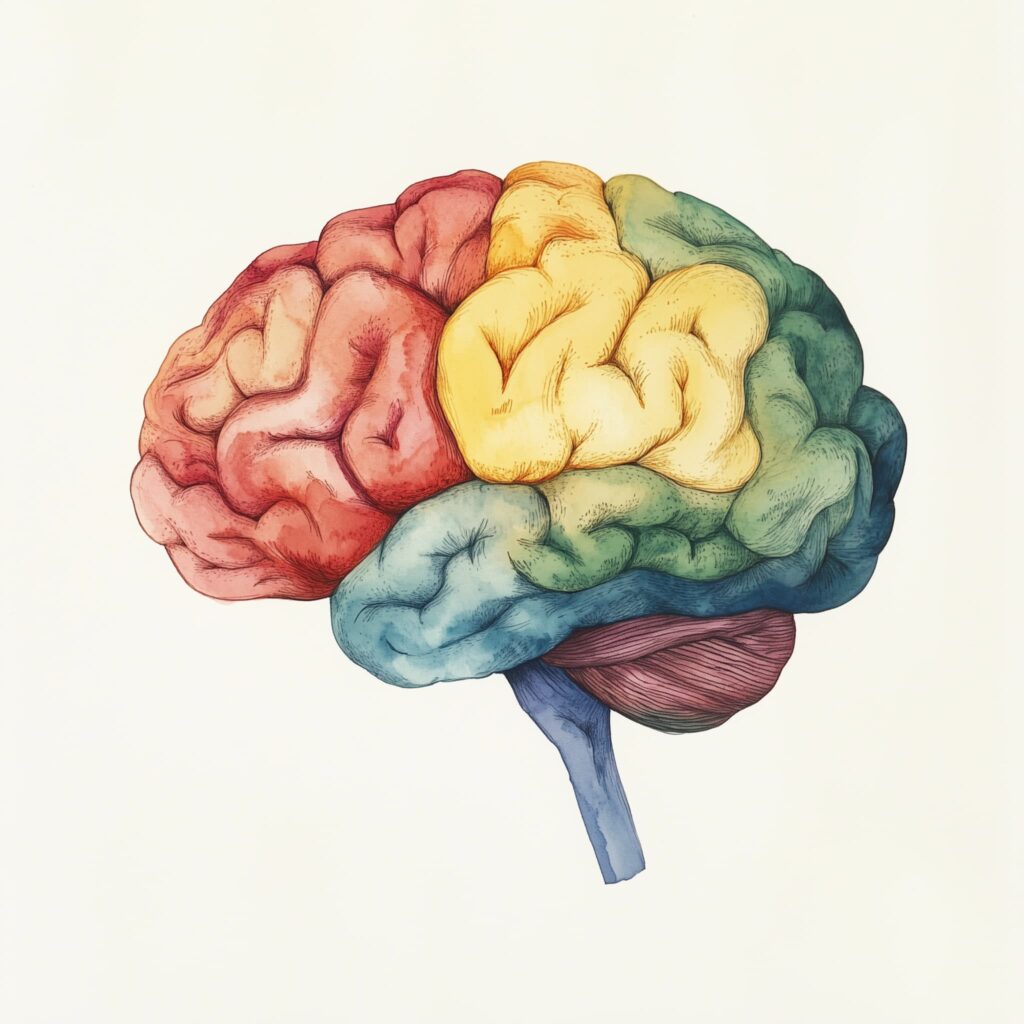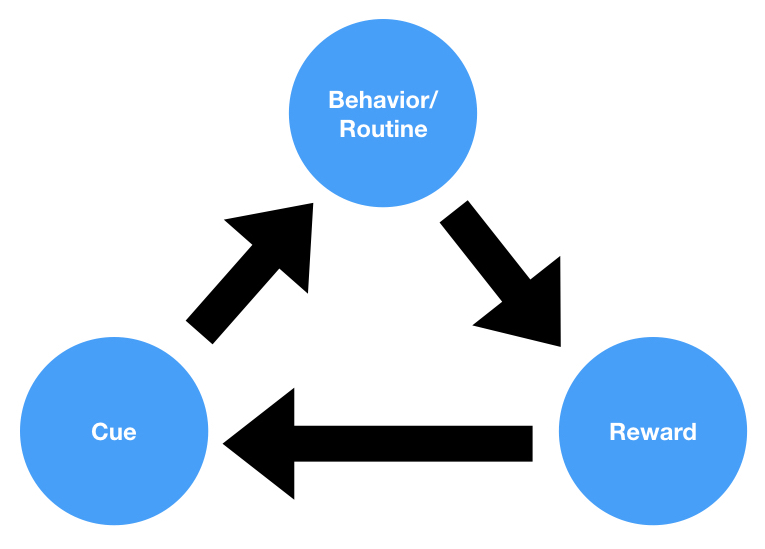
2-Minute Overview
What It Is
A distinctive framework that merges personality traits with intelligence, grounded in neuroscientific research [1,2]. In other words, it offers a more complete way to understand human behavior—why we think, feel, and act as we do—across many real-life settings.
As far as we know, no widely recognized personality framework systematically incorporates general intelligence (IQ) as a core factor. The Six Systems Model fills this gap by intertwining cognition and personality factors in a more integrated way, making it, to the best of our knowledge, one of the first of its kind.
Key Insights
- Helps explain why individuals respond uniquely to the same situations
- Highlights how curiosity, empathy, organization, and other traits interact with intelligence in everyday life
- Provides deeper clarity on behavior—especially in group settings and under stress or change
Why It’s Innovative
- Includes intelligence—often overlooked in personality models
- Maps traits to well-studied brain networks (e.g., amygdala for threat, mesolimbic dopamine pathways for reward) for a more biologically informed view [3,4]
- Builds on established personality research (e.g., Big Five) but integrates cognitive factors for a more comprehensive approach
While general cognitive ability (GCA) is known to be a strong predictor for a range of outcomes—from learning efficiency to job performance—it is rarely treated as a core piece of personality. By recognizing how intelligence and traits interact, the Six Systems Model offers added predictive power.
Why It Matters
- Shows that how quickly you process information can amplify or soften how certain traits manifest
- Reveals that understanding “why we do what we do” can lead to more empathy, better communication, and personal growth
Why the Six Systems Model Is Different
Top-Down Meets Bottom-Up
We began with substantial, evidence-based personality research [5]—focusing on core traits that consistently appear in studies—and cross-referenced those insights with neuroscientific data on the brain’s principal networks (amygdala, frontoparietal circuits, mesolimbic dopamine pathways, etc.). We discovered overlapping patterns between neural circuits and personality factors.
To the best of our knowledge, the Six Systems Model is among the first personality frameworks to explicitly incorporate general cognitive ability (IQ) as a core factor alongside traditional trait dimensions. Our assessment draws on validated personality scales and proven cognitive measures, reflecting decades of psychometric research.
Holistic + Neuroscience-Based
By merging these angles, we created a biologically informed model that encompasses both traits and intelligence. That second piece—how swiftly or deeply you process information—often gets overlooked, yet it’s crucial for understanding why we behave the way we do. Our custom measure unites proven personality constructs [1,5] with established IQ items, offering a richer perspective on human behavior.
While the model’s construction is proprietary, we rely on well-validated questionnaires and recognized cognitive assessments. We also continue refining our methodology as new data and neuroscientific insights emerge.
Why It’s Uniquely Comprehensive
Traditional personality tests may downplay how the brain shapes emotions and actions or ignore cognitive ability altogether. The Six Systems Model addresses that gap, combining intelligence and modern neuroscience for a systems-level look at human behavior.
However, we do not claim to capture the entire complexity of the brain. Rather, we provide a structured framework that helps illustrate why individual differences in cognition and core traits can lead to varied behaviors—even in similar circumstances.
1. Why Most Personality Models Leave Out Intelligence
1.1. Separate Research Worlds
“Personality” research (like the Big Five) and “intelligence” research historically evolved on different tracks. For instance, the Big Five shows traits like Extraversion or Conscientiousness, but not how someone handles complex problems or learns rapidly.
1.2. ‘It’s About Behavior, Not Smarts’
Some psychologists have treated intelligence and personality as discrete domains. But consider two equally “creative” people: if one navigates complexity more fluidly than the other, you’ll see different outcomes—even if both share a nominal creativity score.
1.3. Why This Matters
If you’ve ever used a personality test that never addressed how you handle dynamic environments, it might be overlooking intelligence. The Six Systems Model puts those puzzle pieces together—allowing you to see how thinking speed and clarity interact with traits.
2. The Six Systems at a Glance
In describing the systems, we use the terms sensitivity and strength—two different facets of each system’s expression:
- Sensitivity: How easily triggered or reactive a system is
- Strength: How powerful or intense the response becomes once activated
Each system exists on a low-to-high continuum for both sensitivity and strength. In the Six Systems assessment, while sensitivity and strength are measured separately, for practical application and ease of interpretation, we provide a combined percentile score. For example, if your Threat Detection score is at the 75th percentile, you rank higher than 75% of people on that system’s overall measure of responsiveness.
Cognition System (Intelligence)
- What It Is: Capacity to learn, adapt, solve problems
- High Strength: Rapid comprehension, strategic thinking
- Low Strength: Slower adaptation, prefers structured guidance
- Why It Matters: Influences how effectively you process and respond to life’s demands
We focus on general cognitive ability (GCA)—one of the strongest known predictors of real-world performance. Still, we recognize that individual experiences, emotional regulation, and context also shape outcomes.
Threat Detection System
- What It Is: Sensitivity to risk, fear, stress
- High Sensitivity: Vigilant, detail-focused (can lean into worry)
- Low Sensitivity: Calm under pressure (though might miss hidden threats)
- Why It Matters: Alerts you to dangers or keeps you steady in tense situations
Reward Seeking System
- What It Is: Drive for ambition, excitement, novelty
- High Strength: Energetic, competitive, possible burnout risk
- Low Strength: Steady, content, may need an extra push for big goals
- Why It Matters: Fuels motivation and perseverance
Exploration System
- What It Is: Curiosity and creativity
- High Sensitivity: Bursting with ideas, can be scattered
- Low Sensitivity: Prefers routine, consistency
- Why It Matters: Powers innovation, open-mindedness, adaptability
Social Cohesion System
- What It Is: Empathy, trust, relationship-building
- High Strength: Cooperative, supportive (might avoid conflict)
- Low Strength: Pragmatic, task-focused (risks missing emotional cues)
- Why It Matters: Builds strong interpersonal bonds and group harmony
Resource Management System
- What It Is: Organization, discipline, follow-through
- High Strength: Great planner, meets deadlines, can be rigid
- Low Strength: Flexible, spontaneous, may struggle with consistency
- Why It Matters: Creates reliability and structure in daily functioning
Analogy: Think of these Six Systems as departments in your “mental company.” Cognition (Intelligence) is the strategic resource allocation that supports or limits each department’s effectiveness.
3. Why Intelligence Makes the Difference
- Faster Processing: With strong cognition, you can handle a surge of new ideas (Exploration) or parse anxious signals (Threat Detection). Without it, those same traits might feel overwhelming.
- Strategic Thinking: Even with moderate Resource Management, higher cognition can reveal shortcuts or effective solutions. Lower cognition may still cope well, but often through more concrete planning or external support.
Real-World Example
A manager with high Threat Detection + moderate Reward Seeking balances caution and ambition more smoothly if she also has strong Cognition—turning anxiety into productive action. However, high cognition doesn’t guarantee stress-free management; emotional regulation, learning history, and social support also factor in.
Key Point: Cognition can amplify or dampen how other traits manifest. It’s less about calling someone “smart” vs. “not smart,” and more about understanding how deeply or quickly they process complexity.
4. A Simple Glimpse at the Brain Science
- Cognition System: Engages frontoparietal networks (key “information highways”)
- Threat Detection System: Associated with the amygdala and stress hormones (e.g., cortisol)
- Reward Seeking System: Linked to mesolimbic dopamine pathways fueling ambition and novelty-seeking
- Exploration System: Correlates with default mode network and mind-wandering, creative connections
- Social Cohesion System: Involves oxytocin activity and prefrontal areas supporting empathy
- Resource Management System: Draws on prefrontal circuits for planning and follow-through
Disclaimer: This is a simplified overview, as personality emerges from complex interactions among multiple brain regions and neurochemical systems. We use terms like “associated with” to reflect correlational links, not strict one-to-one causation.
5. Real-World Scenarios & Quick Reflections
Scenario A: Two Creatives, Different Outcomes
- Amy: High Exploration + strong Cognition + moderate Resource Management → quickly filters and organizes ideas into workable plans.
- Mark: High Exploration + lower Cognition + low Resource Management → brims with ideas but struggles to refine or execute them.
Takeaway: Both are “creative,” yet intelligence transforms how effectively each channels that creativity.
Scenario B: Handling Stress
- Carlos: High Threat Detection + moderate Cognition → triple-checks details, sometimes gets stuck on “what-ifs.”
- Danielle: High Threat Detection + high Cognition → more readily discriminates real vs. imagined issues, though other factors (like emotional regulation) still matter.
6. Comparison: Six Systems vs. Traditional Personality Tests
| Feature | Six Systems | MBTI | Big Five |
|---|---|---|---|
| Intelligence Included? | Yes (Cognition is central) | No | No |
| Neuroscience Basis? | Yes (ties to established brain networks) | Not specifically | Some recognized research, but no IQ focus |
| Focus | Behavior via “trait + cognition” | 4 dichotomies (E–I, S–N, etc.) | 5 broad trait dimensions (OCEAN) |
| Real-World Fit | Emphasizes how thinking speed reshapes traits | Popular for team-building | Very research-based for traits only |
While other models capture important personality dimensions, the Six Systems Model stands out by integrating cognitive processing speed and capacity—factors that fundamentally influence how traits manifest in daily life.
7. Summary
Why This Model Stands Out
The Six Systems Model adds intelligence to the personality equation, yielding a more complete, neuroscience-informed picture of human behavior. Traditional approaches focus primarily on traits (like creativity or introversion), but real-world success often hinges on how quickly or deeply someone can process complexity. In other words, cognitive ability can magnify or diminish how traits appear in daily life.
Why It’s Helpful
- Promotes Awareness: People discover they’re not simply “lazy” or “scattered.” Sometimes, a lower Resource Management score or lower Cognition can be the culprit, guiding us to better strategies and support.
- Encourages Empathy: High Threat Detection might look like anxiety, but understanding this system fosters compassion, rather than criticism.
- Informs Better Decisions: Teams and individuals can align tasks to people’s specific System strengths—Reward, Exploration, Social Cohesion, etc.—while factoring in each person’s cognition level.
Key Takeaways
- Core Gap: Many existing models omit or downplay intelligence, overlooking a crucial dimension for handling complexity.
- Why It Matters: Cognition can amplify or soften traits, especially under stress or uncertainty.
- The Six Systems: Cognition, Threat Detection, Reward Seeking, Exploration, Social Cohesion, and Resource Management.
- Main Impact: A deeper grasp of everyday behavior and a better match between individuals’ strengths and their roles.
- Implementation: Straightforward steps—like self-assessment or day-in-the-life reflection—help you apply these insights immediately.
By uniting intelligence and personality through modern neuroscience, the Six Systems Model bridges who we think we are with how we operate in the real world—offering a powerful, research-backed lens on both individual and group dynamics.
References
- DeYoung, C. G. (2010). Personality neuroscience and the biology of traits. Social and Personality Psychology Compass, 4(12), 1165–1180.
- LeDoux, J. (1996). The Emotional Brain. Simon & Schuster.
- Cole, M. W. et al. (2012). Global connectivity of prefrontal cortex predicts cognitive control and intelligence. Journal of Neuroscience, 32(26), 8988–8999.
- Schultz, W. (2015). Neuronal reward and decision signals: from theories to data. Physiological Reviews, 95(3), 853–951.
- Costa, P. T., & McCrae, R. R. (1992). NEO PI-R Professional Manual. Psychological Assessment Resources.
- Raichle, M. E. et al. (2001). A default mode of brain function. Proceedings of the National Academy of Sciences, 98(2), 676–682.




